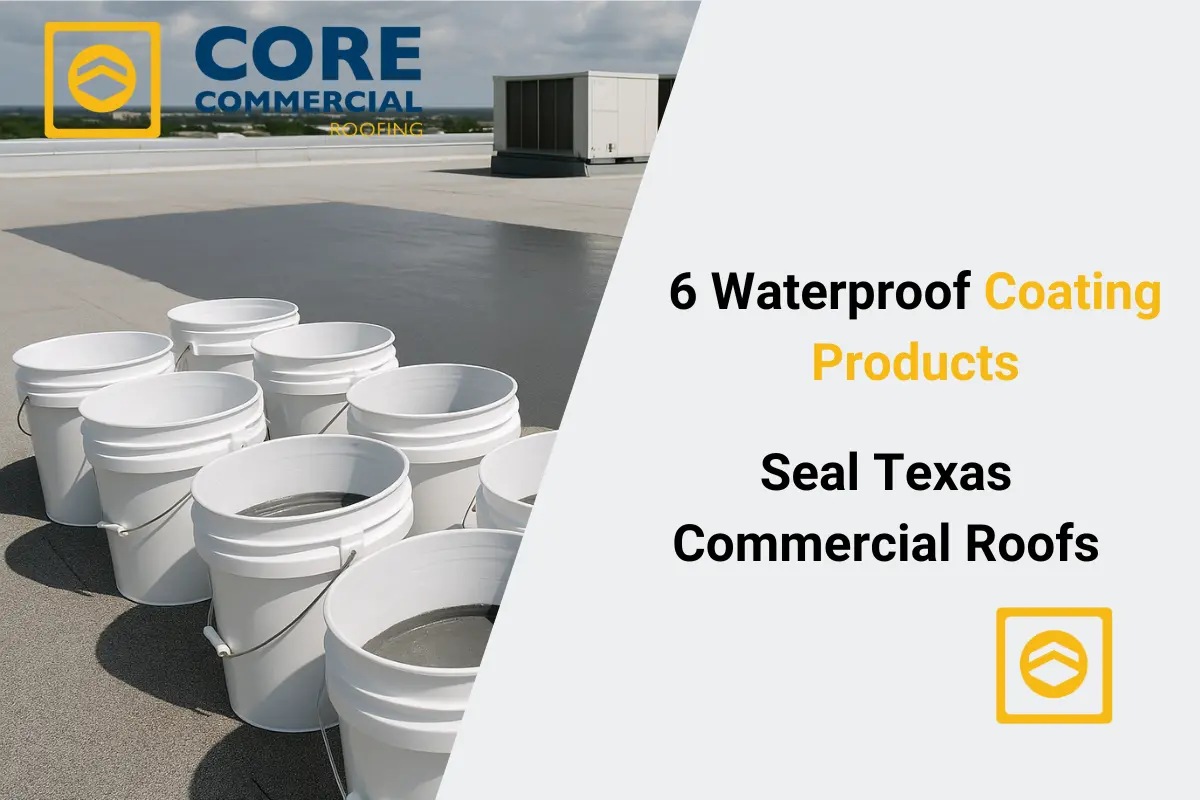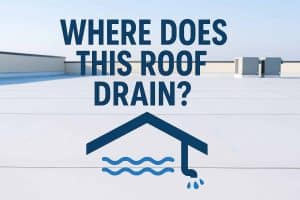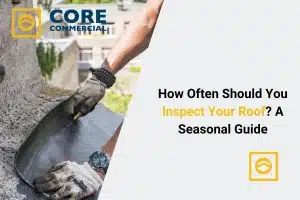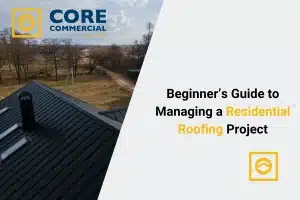Commercial roofs face relentless abuse from sun, rain, wind, and hail. Without a waterproof barrier, these elements quickly lead to leaks, higher energy bills, and costly damage. Whether you manage a warehouse, retail space, or office building, keeping your roof sealed is essential—not optional.
But not all waterproof coatings are equal. Some resist UV damage, others stand up to ponding water. The key is choosing the right one for your roof type and climate. This article covers six of the most effective waterproof coatings for commercial roofs, including our top pick: Commercial silicone coatings, known for their superior UV resistance, ponding water protection, and long-term durability. You’ll learn which coatings work best for different roofs and how to make the smartest, most cost-effective choice for your building.
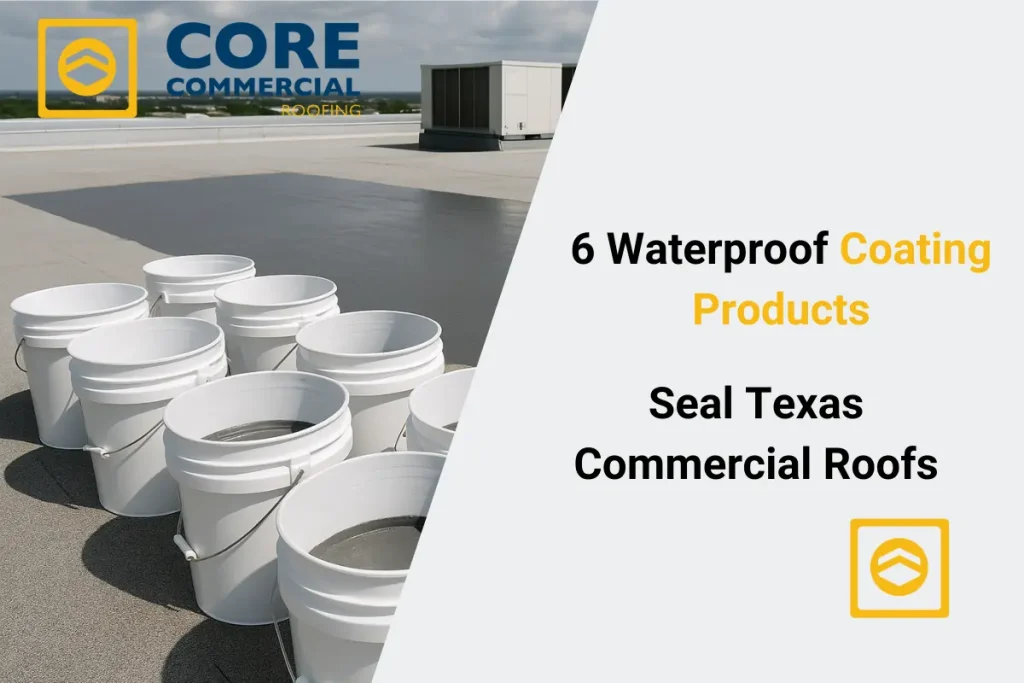
Table of Contents
Why Waterproofing Is Critical for Texas Commercial Roofs
From scorching temperatures to flash floods, commercial roofs take a beating year-round. Flat and low-slope roofs are especially vulnerable to pooling water, UV breakdown, and sealant failure over time. Without a durable waterproof coating, your building becomes susceptible to:
- Mold and mildew inside
- Damaged insulation or ceilings
- Unpredictable repair costs
- Reduced roof lifespan
A quality roof coating acts like a shield—sealing out moisture, resisting thermal expansion, and protecting your building from top to bottom.
How to Choose the Right Roof Coating Product
The best coating depends on:
- Roof type – Metal, built-up, TPO, EPDM, concrete, or modified bitumen
- Roof condition – New, aging, or already leaking
- Local climate stress – UV intensity, rain frequency, or high humidity
- Usage – High foot traffic vs. limited access
- Energy goals – Reflectivity and insulation benefits
Choosing the wrong product can result in premature failure. But with the right match, a roof coating can add 10–20 years of service life and significantly reduce overhead costs.
6 Waterproof Coating Products That Work in Texas
1. Silicone Roof Coating
Best for: Flat roofs that experience ponding water or direct sunlight
Why it works: Silicone resists standing water, UV rays, and extreme heat without degrading.
Benefits:
- Remains flexible under temperature swings
- Reflects sunlight to reduce building heat
- Doesn’t chalk or peel in intense sun
Problems it solves:
- Seals roof seams and cracks
- Blocks leaks in low-drainage areas
- Reduces A/C demand and cooling costs
Note: Requires thorough surface cleaning before application.
2. Acrylic Roof Coating
Best for: Low-slope roofs needing UV resistance and affordability
Why it works: Acrylic is cost-effective, easy to apply, and highly reflective.
Benefits:
- Reflects up to 85% of UV rays
- Environmentally safe and water-based
- Helps reduce summer cooling loads
Problems it solves:
- UV-related surface degradation
- High internal temperatures
- Minor leaks and surface wear
Note: Avoid using where water tends to pond.

3. Polyurethane Roof Coating
Best for: Roofs with foot traffic, rooftop equipment, or hail exposure
Why it works: This heavy-duty coating resists abrasion, impact, and expansion/contraction.
Benefits:
- Extremely durable under physical stress
- High bond strength to aging surfaces
- Ideal for industrial and manufacturing settings
Problems it solves:
- Impact damage from tools or hail
- Traffic wear from maintenance crews
- Aging or brittle roof surfaces
Note: Heavier and more expensive than others, but worth it for high-traffic roofs.
4. Asphalt Emulsion Coating
Best for: Older roofs or multi-layer systems needing restoration
Why it works: It’s a flexible, budget-friendly base layer with solid waterproofing abilities.
Benefits:
- Fills surface cracks and gaps
- Great for re-roofing without tear-off
- Economical for larger buildings
Problems it solves:
- Weathering on aging roofs
- Seepage through old seams
- Structural weakening from water entry
Note: Requires a UV-protective topcoat for long-term durability.
5. Butyl Rubber Coating
Best for: Metal roofs or buildings near coastal or storm-prone zones
Why it works: Butyl is known for its high elasticity and tight bond to metal and seams.
Benefits:
- Excellent waterproofing for joints
- Prevents rust and corrosion
- Strong adhesion on metal surfaces
Problems it solves:
- HVAC curb leaks
- Seams separating under stress
- Water intrusion on sloped metal decks
Note: Use a reflective topcoat to offset lower UV resistance.
6. SEBS (Styrene-Ethylene-Butylene-Styrene) Roof Coating
Best for: Commercial roofs with chemical exposure or temperature extremes
Why it works: SEBS performs well in volatile conditions and fluctuating climates.
Benefits:
- Long-term waterproofing
- Resistant to grease, chemicals, and fumes
- Maintains elasticity during hot and cold cycles
Problems it solves:
- Coating breakdown near HVAC or kitchen vents
- Joint failures in high-movement structures
- Water infiltration from material shrinkage
Note: Should be installed by professionals for proper adhesion and performance.
Roof Types and Best Coating Matches
| Roof Type | Best Coating Options |
| Metal | Butyl Rubber, SEBS |
| Built-up (BUR) | Asphalt Emulsion, Polyurethane |
| Modified Bitumen | Acrylic, Silicone |
| TPO / EPDM / PVC | SEBS, Silicone |
| Concrete | Polyurethane, Acrylic |
Benefits of Roof Coatings Beyond Waterproofing
Aside from leak protection, roof coatings offer commercial property owners:
- Lower Energy Bills: Reflective coatings reduce surface temps by up to 50°F
- Extended Roof Life: Adds 10–20 years without replacing the roof
- Maintenance Savings: Fewer leaks mean fewer emergency repairs
- Environmental Impact: Less waste from tear-offs and landfills
- Potential Tax Breaks: Some reflective coatings may qualify for energy-efficiency incentives
How to Maximize the Lifespan of Roof Coatings
Proper prep and application are critical. For best results:
- Clean and dry the surface completely
- Repair any structural or substrate issues
- Use primers for metal or smooth membranes
- Apply during dry weather above 50°F
- Schedule annual inspections and light cleaning
Signs It’s Time to Reseal Your Roof
Keep an eye out for these red flags:
- Blistering or bubbling
- Chalking or peeling surface
- Soft spots or standing water
- Interior leaks or moisture stains
- Climbing cooling bills
If any of these appear, it’s time to recoat before further damage sets in.
Local Conditions That Impact Roof Coating in Texas
Though your building only needs to be mentioned generally once or twice, the region’s vast size introduces different coating challenges:
- Coastal zones: High salt content and wind-driven rain call for corrosion-resistant options
- High UV zones: Reflective coatings are a must in hot urban centers
- Storm-prone areas: Flexible, ponding-resistant coatings protect from sudden downpours
Always match your product choice to the actual environmental stress your building faces.
Final Thoughts: Choose the Right Coating for Long-Term Protection
Choosing a waterproof roof coating isn’t just about stopping leaks—it’s about improving energy efficiency, extending roof life, and protecting your business’s bottom line. When chosen carefully and applied correctly, the right coating turns your commercial roof into a resilient, high-performing barrier against sun, storms, and aging.
Don’t wait until water stains appear or energy costs spike. Seal your roof now, and rest easy knowing you’re ahead of the next storm—and the next heatwave.
FAQs
What is the best waterproof roof coating for Texas commercial buildings?
Silicone roof coatings are highly effective for Texas commercial buildings due to their excellent resistance to UV rays and ponding water. They provide a durable, seamless barrier that withstands the state’s intense sun and heavy rains, extending the roof’s lifespan and reducing maintenance needs.
How do I seal a flat commercial roof in Texas?
To seal a flat commercial roof in Texas, first clean the surface thoroughly. Then, apply a high-quality waterproof coating like silicone or acrylic, which are designed to handle Texas’s extreme weather conditions. This process prevents leaks and extends the roof’s service life.
Which roof coating is best for Texas heat and storms?
Silicone coatings are ideal for Texas’s hot and stormy climate. They reflect sunlight, reducing heat absorption, and provide a waterproof barrier that resists damage from heavy rains and storms, helping to maintain a cooler building interior and prevent leaks.
Can roof coatings help lower energy bills in Texas?
Yes, reflective roof coatings like acrylic or silicone can significantly lower energy bills in Texas. By reflecting sunlight, they reduce the amount of heat absorbed by the building, leading to decreased cooling costs and improved indoor comfort.
How long does a commercial roof coating last in Texas?
A properly applied commercial roof coating can last between 10 to 20 years in Texas, depending on the product used and environmental conditions. Regular maintenance and inspections can help maximize the coating’s lifespan.
Is it better to coat or replace a commercial roof in Texas?
Coating a commercial roof is often more cost-effective than replacement, especially if the roof is structurally sound. Coatings can extend the roof’s life, improve energy efficiency, and prevent leaks, making them a smart choice for many Texas businesses.
What are the benefits of waterproof roof coatings for Texas businesses?
Waterproof roof coatings offer numerous benefits for Texas businesses, including leak prevention, extended roof lifespan, improved energy efficiency, and reduced maintenance costs. They also help protect the building’s interior from water damage.
How do I choose the right roof coating for my Texas commercial building?
Selecting the right roof coating depends on your building’s specific needs. Consider factors like roof type, climate, and desired benefits. Consulting with a professional roofing contractor can help determine the best product for your situation.
Are there any tax incentives for using reflective roof coatings in Texas?
Yes, Texas businesses may qualify for tax incentives or rebates when installing energy-efficient reflective roof coatings. These incentives aim to encourage energy conservation and can offset installation costs. Check with local programs for eligibility.
How often should I inspect my commercial roof coating in Texas?
It’s recommended to inspect your commercial roof coating at least twice a year, preferably in the spring and fall. Regular inspections help identify and address issues early, ensuring the coating continues to protect your building effectively.

